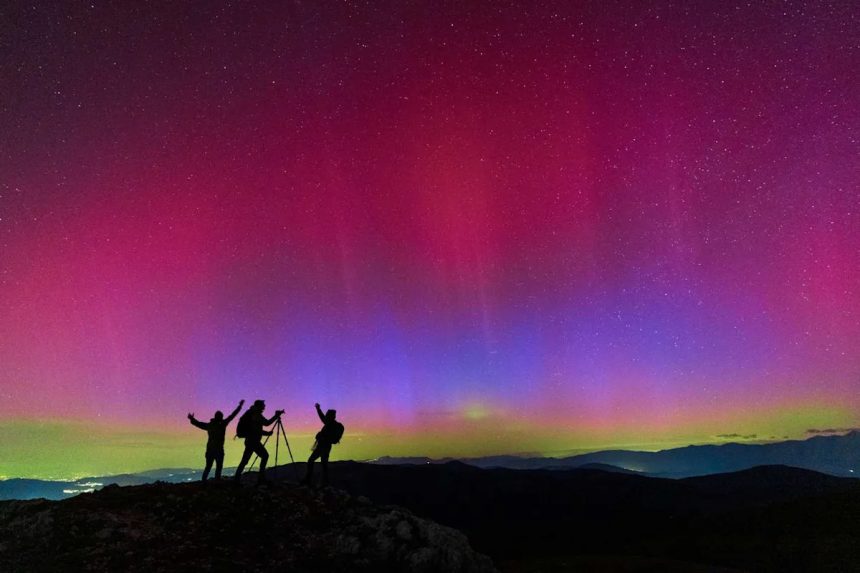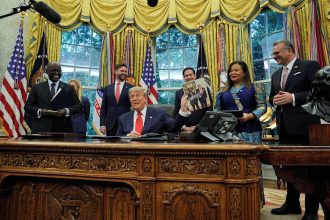NEED TO KNOW
-
A new wave of solar energy is lighting up Earth’s magnetic field this week, with NOAA forecasting minor to moderate geomagnetic storms early this week, setting the stage for another northern lights display
-
The auroras could dip farther south than usual, with the best chances of visibility across eight northern states
-
As solar activity peaks midweek, the best viewing window is 10 p.m. and 2 a.m. local time, ideally in dark, rural areas with clear northern views
The sky is getting ready to show off again!
If you missed the last round of northern lights, not to worry, as space weather forecasters say another dazzling display may be on the way.
The aurora borealis (northern lights) is caused by geomagnetic storms, which occur when charged particles from the sun collide with gases in Earth’s atmosphere, creating brilliant waves of light in the sky.
According to NOAA, a wave of solar energy is set to ripple through Earth’s magnetic field early this week, sparking minor to moderate geomagnetic storms from Monday, Nov. 10, through Wednesday, Nov. 12.
While forecasters expect a minor geomagnetic storm this evening — increasing to moderate on Tuesday and Wednesday night — the “view line” for the aurora borealis will likely drop even lower later in the week.
Be sure to capture the magic while it lasts, whether you’re chasing the aurora from your own backyard or heading north for clearer skies.
Here’s everything you need to know, from when to look up and where to go.
When will the northern lights be visible?
JFK/APA/AFP via Getty
Northern Lights over Fusch
Auroras are expected to be visible from Monday night, Nov. 10 through Wednesday, Nov. 12, with the strongest activity forecast for Tuesday and Wednesday.
NOAA’s latest predictions show minor geomagnetic storms beginning tonight, building to moderate levels midweek, so the northern lights could peak late on Tuesday, Nov. 11, into early Wednesday morning.
For the best viewing window, be sure to head outside between 10 p.m. and 2 a.m. local time, when the skies are darkest.
Where will the northern lights be visible?

Andrew Chin/Getty
Aurora borealis over Manning Park, British Columbia
Northern states: you’re in for a treat!
If skies stay clear and weather permits, the aurora could stretch across parts of Washington, Idaho, Montana, North Dakota, South Dakota, Wisconsin, Michigan and Maine.
While your chances improve the farther north you go, strong geomagnetic conditions sometimes push the lights even deeper into the continental U.S., which means that even stargazers in the Midwest and Great Lakes region might catch a faint shimmer on the northern horizon.
How to watch the northern lights?

Robert Nemeti/Anadolu via Getty
Northern lights in Debrad, Slovakia
You don’t need a telescope, just the right spot and a little patience.
To see the aurora in all its glory, head far from city lights, ideally to an open space with a clear northern view.
The trick? Stay out longer than you think, as the northern lights often appear as a slow glow before bursting into color. Let your eyes adjust and look for faint green bands or arcs low in the sky that begin to move or ripple
How to take photos of the northern lights?
The only thing better than witnessing this celestial event? Capturing the moment and making memories. The best part? Your smartphone will do the trick!
Just switch on Night Mode in your settings and aim your lens at the sky.
For those with more advanced gear, like a DSLR or mirrorless camera, use a tripod and shoot in manual mode for the best results.
Remember, patience goes a long way.
Read the original article on People









